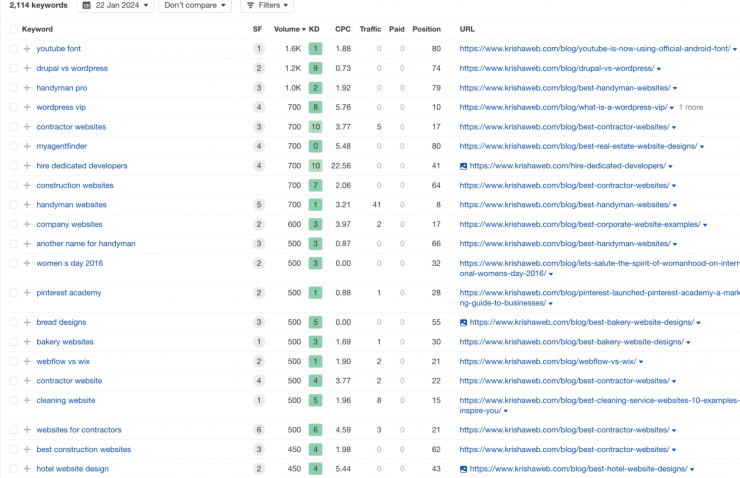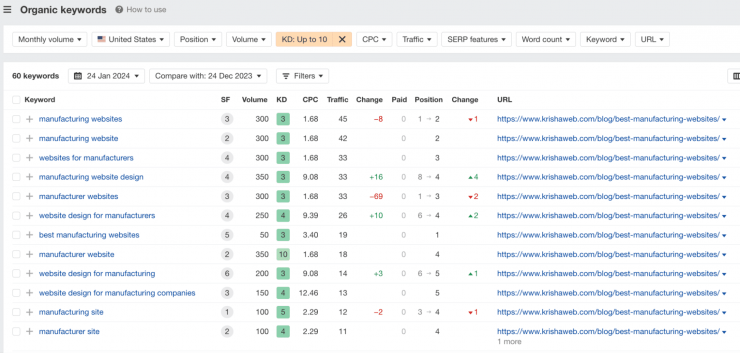Promising Keywords of Competitors and How to Find Them for IT Companies
Your site’s only showing up around the 60th to 80th spots on Google for certain keywords – and clearly, that’s not gonna cut it for snagging development contracts.
What’s your next move?
Svitlana Velychko is a link building expert with 8+ years of practical experience, runs the author’s Telegram channel In links we trust, a Youtube channel with practical recommendations on how to create a link profile. Svitlana has more than 1000 clients in her agency Links-Stream with an average client budget for link building of $30,000.
A smart play here would be to zero in on those keywords where SEO promotion won’t break the bank (or eat up too much time) but could still potentially reel in those crucial leads. And guess what?
You can scope out these golden keywords by checking out what your competitors are up to. Stick around, ’cause I’m about to break down how you can pull this off.
Look! Here are the previous articles written about the same topics at Kraftblick.Media:
Линкбилдинг для аутсорсинга: на чем экономить и как получать результаты быстрее
Как IT компании при выходе на западные рынки попасть в топ-10 Google с помощью линкбилдинга. Разбор стратегии на примере финтех-проектов
Как использовать PBN сети для продвижения сайтов IT компаний. Разбор на примере реальных кейсов
Как аутсорсерам делать линкбилдинг на US. Стратегии построения ссылок [и много примеров]

Do This
Для доступа к нему нужна регистрация (это бесплатно) Once we’ve zeroed in on a competitor, let’s dive deep into krishaweb.com’s site analysis, hitting the ‘Organic Keywords’ tab. This Ahrefs report lays out the most searched-for queries driving the bulk of the traffic to the project. By applying a KD (Keyword Difficulty) filter of 0-10, we’re able to spotlight those keywords considered low-hanging fruit for SEO efforts, needing minimal to no backlinks to rank. The screenshot reveals a fascinating strategy – the agency isn’t just pushing its services but is also crafting articles around website types for specific business sectors (like real estate, bakeries, cleaning services, hotels, etc.). A smaller slice of the content pie deals with CMS comparisons, a real headache for business owners not in the know. Each query captured in the screenshot represents a potential goldmine of targeted traffic, assuming the blog posts are well-executed and incorporate commercial elements like contact forms or special offers tailored to specific businesses. Sounds like a solid plan, right? The concept of tailoring blog content to specific business niches has been thoroughly vetted for soundness, and now it’s time to hammer out a more detailed implementation strategy. We’ll start by scrutinizing the keywords for each blog article, prioritizing those with the most KD 0-10 keywords. Why? This approach lets us quickly gather organic traffic and initial SEO results post-publication for those high-potential keywords. Taking our example of krishaweb.com, the piece on krishaweb.com could be a great starting point since it ranks for 60 promising keywords. It might make sense to skip certain articles if they only rank for a couple of keywords – a call that’s made based on your company’s resources and the writer’s bandwidth. To boost the impact, consider sprinkling in a few forum links and remember to place guest posts on the main page of the site. The homepage is crucial for the site’s overall link strength and will help you compete in the tougher SERPs of the US and Europe. Leveraging competitors’ high-potential keywords is a strategy for driving traffic with minimal expense, sparking new business ideas, inspiring new ventures, and most importantly, snagging cost-effective leads from Google.Здесь спрятан премиум контент.
Then Do That

And That






